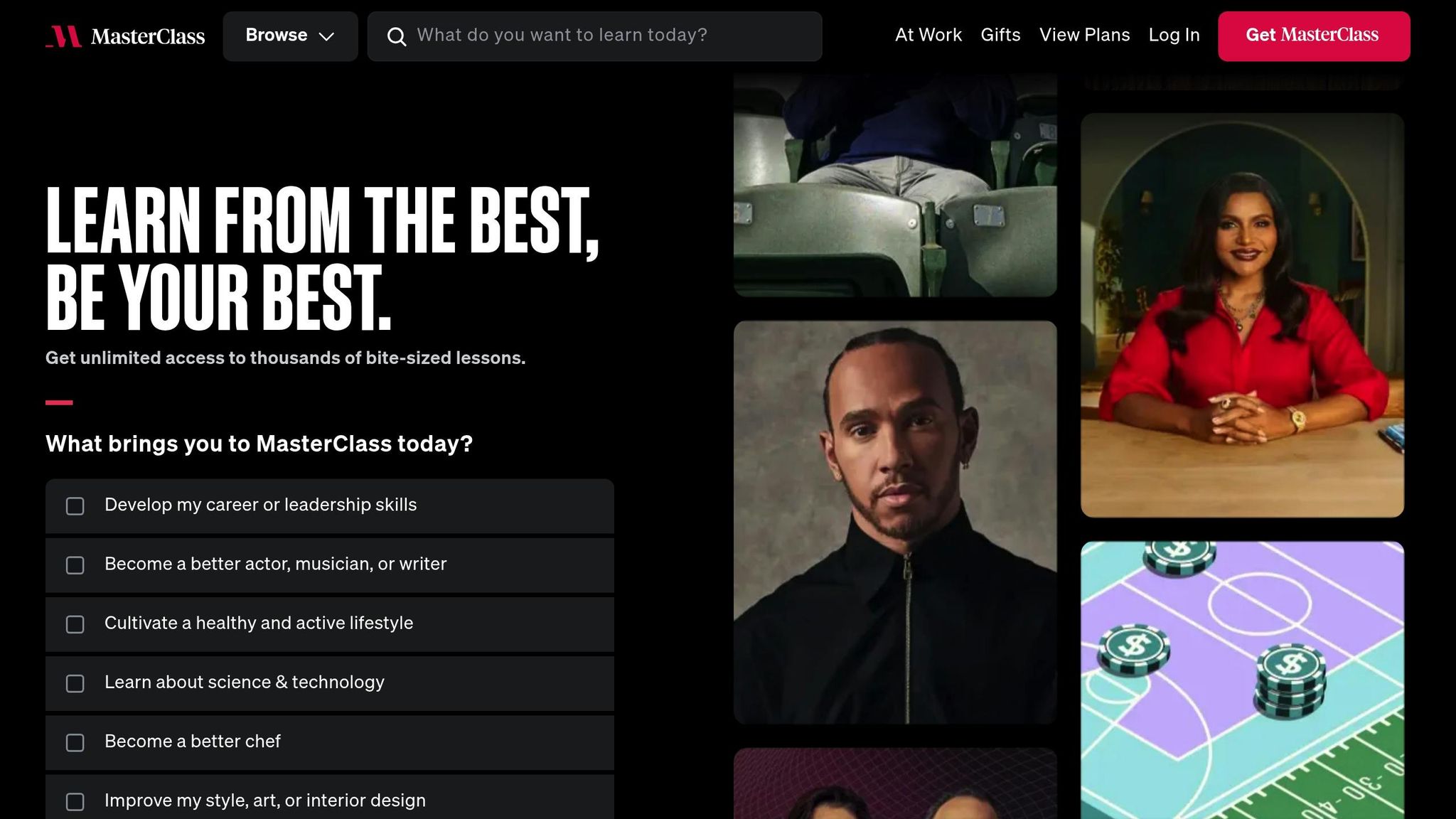Bob Iger: Strategic Patience and Long Game Thinking
Explore the leadership approach that transformed a global entertainment powerhouse through strategic patience and visionary decision-making.

Bob Iger, the former and current CEO of Disney, is a master of long-term leadership. His tenure (2005–2020, returning in 2022) saw Disney’s value soar from £45 billion to £185 billion. Iger prioritised three key areas: producing world-class content, advancing technology, and expanding globally. This approach drove Disney’s acquisitions of Pixar, Marvel, Lucasfilm, and 21st Century Fox, plus the launch of Disney+ and Shanghai Disney Resort. Iger’s leadership is built on patience, optimism, integrity, and empowering teams to deliver bold results. His ability to balance risk with careful planning - like a chess master in the endgame - has transformed Disney into a global powerhouse.
Key takeaways from Iger’s leadership:
- Patience pays off: Deliberate, long-term decisions like acquiring Marvel and Lucasfilm turned Disney into a storytelling giant.
- Empowerment drives success: Iger trusted his teams, decentralising decision-making to encourage ownership and creativity.
- Clear communication matters: He prioritised transparency and clarity, ensuring alignment across Disney’s vast operations.
- Vision over quick wins: From Disney+ to park expansions, Iger focused on sustained growth, not fleeting trends.
Iger’s approach combines calm, calculated moves with bold ambition. His legacy shows that great leadership is about playing the long game, staying composed under pressure, and always thinking several moves ahead.
Bob Iger Teaches Business Strategy and Leadership | Official Trailer | MasterClass

Core Values and Principles of Bob Iger's Leadership
Bob Iger’s leadership wasn’t just about making decisions; it was about building a foundation of values that informed every move he made. His calm, strategic approach was underpinned by a set of guiding principles that shaped his tenure at Disney.
Key Leadership Values
At the heart of Iger's success were four core values: optimism, courage, integrity, and empowerment. These values were not abstract ideals but practical tools that shaped his leadership style, much like a chess player thinking several moves ahead.
Optimism was a cornerstone of Iger’s approach, particularly during challenging times. He believed that a forward-looking attitude could energise an organisation, even in moments of uncertainty. As Iger himself explained:
"Optimism sets a different machine in motion. Especially in difficult moments, the people you lead need to feel confident in your ability to focus on what matters, and not to operate from a place of defensiveness and self-preservation."
This mindset wasn’t just about morale - it played a pivotal role in bold decisions, such as Disney’s major acquisitions, which expanded its storytelling reach and influence.
Integrity, meanwhile, was non-negotiable for Iger. He held himself and his organisation to the highest ethical standards, believing that success was inseparable from trust and quality. He summed this up succinctly:
"Nothing is more important than the quality and integrity of an organisation's people and its product. A company's success depends on setting high ethical standards for all things, big and small. Another way of saying this is, 'the way you do anything, is the way you do everything.'"
Decentralisation and Empowerment
Iger’s values didn’t just define his personal leadership - they shaped Disney’s organisational culture. His commitment to integrity and courage translated into a decentralised model of decision-making, which empowered creative leaders to take ownership of their projects.
Rather than micromanaging, Iger trusted his teams to innovate and deliver. He recognised that creativity couldn’t be dictated from the top; it had to grow organically within the organisation. By giving creative teams the autonomy they needed, while ensuring alignment with Disney’s broader goals, Iger created an environment where groundbreaking ideas could thrive.
This empowerment wasn’t just about delegation - it was about cultivating trust. Iger understood that when people feel valued and supported, they naturally rise to the occasion. He described his philosophy as follows:
"Create an environment where people know you'll hear them out, that you're emotionally consistent and fair-minded, and that they'll be given chances for honest mistakes."
This approach encouraged accountability. When team members felt a genuine sense of ownership, they were more invested in delivering outstanding results.
The 10 Principles of Leadership
Iger’s leadership style wasn’t just instinctive - it was guided by ten clear principles that informed his decisions, from day-to-day operations to transformative deals.
- Optimism and courage: Fear stifles creativity, but bold decisions open up new possibilities. Iger embraced risk, knowing that hesitation could hinder progress.
-
Focus and decisiveness: Clarity and efficiency were central to his leadership. As he put it:
"If you don't articulate your priorities clearly, then the people around you don't know what their own should be. Time and energy and capital get wasted."
-
Curiosity: A relentless curiosity drove Iger’s awareness of market dynamics and emerging opportunities:
"The path to innovation begins with curiosity."
-
Fairness and thoughtfulness: He valued informed decision-making and meaningful engagement with his teams:
"Thoughtfulness is one of the most underrated elements of good leadership."
-
Authenticity: Iger believed in leading with empathy and honesty:
"Be genuine. Be honest. Don't fake anything. Lead with empathy and humility, and your team will follow."
-
Relentless pursuit of perfection: While he didn’t advocate perfectionism at all costs, Iger refused to settle for mediocrity:
"This doesn't mean perfectionism at all costs, but it does mean a refusal to accept mediocrity or make excuses for something being good enough."
- Integrity: Consistently upholding high ethical standards was non-negotiable.
Together, these principles formed a comprehensive framework that helped Iger navigate Disney through transformative periods. His ability to lead with clarity, conviction, and empathy ensured that Disney not only adapted to change but thrived amidst it.
Strategic Patience in Bold Decisions
Bob Iger's leadership stands out for his calm and deliberate decision-making, even under immense pressure. His ability to remain composed during pivotal moments has been a defining strength, enabling Disney to navigate transformative changes that shaped its future.
The Art of Acquisition Storytelling
The acquisitions of Pixar (2006), Marvel (2009), and Lucasfilm (2012) were more than business deals - they were carefully crafted stories of vision and patience. Each required Iger to balance bold ambition with careful management of stakeholders, showing how thoughtful decisions can lead to extraordinary outcomes.
In 2006, Disney's animation division was struggling, a critical issue for a company built on storytelling through animation. Instead of rushing into a quick fix, Iger recognised the deeper need to reignite Disney’s creative spirit. Acquiring Pixar wasn’t just about gaining technology or talent - it was about restoring Disney’s identity as a leader in animated storytelling.
The Marvel acquisition in 2009 showcased Iger’s ability to see opportunities where others saw uncertainty. At the time, superhero films were not the juggernauts they are today. Yet, Iger believed in the long-term potential of Marvel’s characters and stories. That vision has since paid off spectacularly, with Marvel generating over £24 billion in global box office revenue, becoming a cornerstone of Disney’s entertainment empire.
In 2012, the acquisition of Lucasfilm demonstrated Iger’s patient approach to handling iconic brands. Rather than rushing to capitalise on the Star Wars franchise, he focused on creating sustainable strategies that honoured its legacy. His approach turned the acquisition into a cultural milestone, reinforcing Disney’s reputation as a master storyteller.
Iger summed up his philosophy with these words:
"We're in the business of telling stories. Tell a story, and then leverage that story across multiple lines of business and territories."
For Iger, these acquisitions weren’t just about assets - they were about acquiring narratives that could resonate across Disney’s vast ecosystem. His measured approach extended beyond these deals, influencing how he handled crises with the same thoughtful leadership.
Crisis Management Through Composure
In moments of crisis, Iger’s calm and empathetic approach turned challenges into opportunities. One powerful example was his response to the tragic alligator attack at Disney’s Grand Floridian Resort and Spa. Instead of relying solely on corporate communication channels, Iger personally reached out to the affected family, showing that human connection mattered more than protocol.
During the 2008 financial crisis, when many companies were cutting costs reactively, Iger chose to focus on long-term investments. His steady hand helped Disney weather the economic downturn while positioning the company for future growth. This wasn’t about avoiding tough decisions - it was about making them with clarity and foresight.
Iger’s philosophy on decision-making is rooted in thoughtfulness:
"Thoughtfulness is one of the most underrated elements of good leadership."
and:
"The process of gaining knowledge so that when you give an opinion or make a decision, you have enough knowledge to back it up."
This approach was evident during the media industry's digital disruption. While others viewed streaming services as threats, Iger saw them as opportunities. His deliberate strategy led to the creation of Disney+, a move that turned industry disruption into a strategic advantage. These examples highlight how a measured, patient approach can outperform reactive decision-making.
Leadership Styles: Strategic Patience vs Reactivity
Iger’s leadership style stands in stark contrast to reactive approaches. His ability to stay composed and think long-term has consistently delivered better outcomes than impulsive decision-making. The table below illustrates these differences:
| Aspect | Strategic Patience (Iger's Approach) | Reactive Leadership |
|---|---|---|
| Decision Timeline | Gathers information, considers long-term impact | Makes quick decisions under pressure |
| Stakeholder Communication | Builds consensus with clear vision | Often creates confusion with inconsistent messaging |
| Crisis Response | Focuses on empathy and connection | Prioritises operational damage control |
| Risk Assessment | Takes calculated risks with thorough analysis | Acts impulsively, sometimes overlooking consequences |
| Team Morale | Inspires confidence through steady leadership | Creates uncertainty with unpredictable actions |
| Long-term Outcomes | Achieves sustainable growth and transformation | Focuses on short-term fixes, risking future problems |
One of the clearest examples of Iger’s patience was the development of Disneyland Shanghai. This 17-year project, requiring an investment of approximately £4.8 billion, faced immense scrutiny. Many leaders might have abandoned such a lengthy endeavour, but Iger’s perseverance ensured its success, turning it into a symbol of Disney’s global ambitions.
Iger’s optimistic and composed demeanour earned him trust and respect across Disney’s organisation. As he put it:
"People don't want to follow pessimists. Pessimism does not create energy, [or] inspire other people to do their best work. Optimism can inspire people."
This blend of optimism and strategic patience created an environment where bold decisions felt both achievable and well-considered. In an era dominated by instant communication and pressure for quick results, Iger’s ability to think several steps ahead, like a chess master planning the endgame, proved invaluable. His leadership shows that patience, when paired with vision, can lead to extraordinary achievements.
Long Game Thinking: Vision and Growth
Bob Iger’s leadership at Disney is a masterclass in balancing bold vision with strategic patience. Instead of chasing quick wins, Iger focused on positioning Disney for sustained success over decades. His tenure highlights how true leadership means navigating today’s challenges while investing in the future.
Visionary Leadership for Sustained Success
Iger’s strategy was built on three key priorities: creating top-tier creative content, embracing cutting-edge technology, and expanding into global markets. These pillars shaped Disney’s major acquisitions and ventures, driving its growth trajectory.
The results speak for themselves. During Iger’s first term as CEO, Disney delivered eight of the top ten and 13 of the top 20 highest-grossing box office releases ever, each earning over £1 billion. This wasn’t luck - it was the outcome of deliberate investments in storytelling and creative excellence.
Iger’s philosophy of prioritising quality over quantity was central to this success. As he explained:
Volume sometimes can be detrimental to quality. And in our zeal to greatly increase volume, some of our studios lost a little focus. So the first step we've taken is we've reduced volume. We've reduced output, particularly at Marvel
This approach wasn’t limited to films. Iger anticipated the decline of traditional TV bundles and prepared Disney for the streaming era. Instead of resisting digital disruption, he embraced it. Acquiring Pixar in 2006 for £5.9 billion was a pivotal move, not only securing beloved content but also enabling Disney to lead innovations like offering TV shows on Apple’s iTunes.
Empowering Teams to Lead Change
Iger’s leadership style was rooted in trust and autonomy. He believed in empowering teams to innovate while staying aligned with Disney’s overarching mission. This decentralised approach allowed creativity to thrive without losing focus.
When Disney acquired Marvel Entertainment in 2009 for £3.2 billion, Iger gave Marvel’s creative leaders the freedom to maintain their unique style. With Disney’s resources backing them, Marvel expanded its universe dramatically. By 2019, Marvel films had grossed over £17.6 billion globally, with Avengers: Endgame earning over £2.2 billion as the highest-grossing film at the time.
Similarly, Lucasfilm flourished under this model. Films like The Force Awakens achieved global success, earning over £1.6 billion, while The Mandalorian became a cornerstone of Disney+ programming, driving subscriber engagement. This balance of creative independence and strategic alignment allowed Disney’s divisions to innovate while contributing to shared goals.
Iger’s leadership created an environment where bold ideas could flourish. Teams knew they had the support and resources to pursue ambitious projects that aligned with Disney’s long-term vision. This ethos of trust and empowerment set the stage for transformative investments.
Growth Through Patience and Strategic Vision
Disney+ is perhaps the clearest example of Iger’s long-term thinking. Launched in November 2019, the platform attracted 10 million subscribers on its first day and reached 100 million within 15 months. This success didn’t happen overnight - it was the result of years of preparation, from investing in content to building the necessary technology.
Today, Disney’s streaming platforms boast 190 million global subscribers, outpacing traditional media competitors. In 2023, six of the ten most streamed movies in the US came from Disney’s catalogue. These achievements underline the value of patience and strategic foresight.
Disney’s physical experiences also thrived under Iger’s leadership. Attendance at Disney parks doubled post-pandemic, and the company set records for revenue and operating income in 2023. Looking ahead, Iger announced plans to invest £48 billion over the next decade to expand parks and the Disney Cruise Line.
Iger’s ability to seize new opportunities while strengthening Disney’s core offerings is evident in the company’s £1.2 billion investment in Epic Games in 2024. This partnership aims to create an entertainment universe within Fortnite, leveraging Disney’s franchises - like Marvel and Star Wars - to tap into the lucrative gaming market.
His approach reflects a deep understanding of how to navigate industry shifts:
We're in a business that is serving a global population in a very important and a very valuable way. I don't get daunted by disruption. I believe the best way to contend with disruption is to embrace it [and] actually become a disruptor
This mindset allowed Disney to turn challenges into opportunities. When streaming disrupted traditional media, Disney didn’t just adapt - it led the charge. When gaming emerged as a dominant entertainment sector, Disney extended its storytelling into interactive formats.
Iger’s long-term investments not only strengthened Disney’s market position but also exemplified calm, decisive leadership. His ability to think beyond immediate results shows how patience, vision, and bold decisions can drive enduring growth. It’s a reminder that true leadership is about shaping a compelling future while delivering results today.
Leadership Communication and Storytelling
Bob Iger’s ability to weave storytelling into leadership extended far beyond Disney’s creative output. He understood that compelling narratives not only inspire teams but also drive change and bring stakeholders together under a unified vision. His approach to communication reshaped Disney’s internal operations while preserving its creative essence during times of significant transformation.
The Power of Storytelling in Leadership
Iger’s leadership showcased the power of storytelling to unify and inspire. During major acquisitions like Pixar, Marvel, Lucasfilm, and 21st Century Fox, he integrated distinct creative cultures by focusing on shared values rather than imposing corporate mandates. His strategy ensured that each studio retained its individuality while becoming part of Disney’s overarching narrative. At the heart of this approach was a commitment to Disney’s core principles:
"The core values of [Disney's] storytelling are inclusion and acceptance and tolerance and we can't lose that".
This emphasis on shared values allowed acquired teams to see themselves as contributors to Disney’s larger story, rather than as entities being absorbed. Iger’s communication style encouraged collaboration and autonomy, which played a critical role in Marvel’s ability to achieve extraordinary global success. By addressing uncertainty head-on and providing clear direction during transitions, Iger demonstrated how effective leaders can frame challenges within a compelling vision of the future. This approach became a hallmark of his leadership style, setting the tone for Disney’s ongoing transformation.
Aligning Stakeholders Through Clear Narratives
Iger’s storytelling extended to aligning diverse stakeholders, simplifying complex strategies into clear and confident messages. Disney’s evolution under his leadership required buy-in from a wide range of groups, including creative teams, investors, board members, and employees. His communication prioritised transparency and consistency, particularly during periods of transition. For instance, when Iger returned as CEO, he led by example, cutting executive salaries before making broader financial decisions. This act of fairness served as a powerful narrative in itself, reinforcing his commitment to shared sacrifice and accountability.
Externally, Iger excelled at explaining Disney’s acquisition strategies in ways that resonated with both investors and the public. By crafting clear narratives about the company’s future, he helped secure trust and enthusiasm for Disney’s direction. Internally, he ensured that every employee understood their role within the company’s broader goals, fostering a participatory culture where creativity thrived. This approach not only empowered employees but also reinforced a sense of purpose across the organisation.
Connecting to Leadership Story Bank's Mission
Iger’s storytelling exemplifies the principles championed by Leadership Story Bank: finding your voice, crafting core stories, and leading with clarity and presence. His ability to inspire and align teams through narrative demonstrates how storytelling can influence stakeholders and navigate change effectively.
Disney’s current leadership continues to embrace this philosophy. Josh D’Amaro, Chairman of Disney Experiences, echoes Iger’s belief in the transformative power of storytelling:
"The best storytellers are the storytellers that truly believe in their story. They believe in it with their whole body. They believe in it with their whole being".
He further observed:
"These stories, they can actually change the world".
These reflections underscore how authentic communication can drive meaningful change. Iger’s legacy offers emerging leaders valuable lessons in blending vision with emotional resonance and clear communication. In a world shaped by constant change, those who master this balance will be best equipped to guide their organisations into the future.
Lessons for Future Leaders
Bob Iger's leadership journey highlights the importance of strategic patience and a focus on long-term goals. His approach showcases how leaders can navigate challenges while prioritising steady growth and open communication. These lessons provide a framework for leadership that is both effective and forward-thinking.
Key Insights from Bob Iger's Leadership
Iger's career offers several guiding principles that set exceptional leaders apart from those who simply react to circumstances. At the heart of his philosophy was strategic patience, understanding that real transformation takes time. As he put it:
"Embrace change, rather than living in denial of it".
This mindset was instrumental in Disney's seamless integration of Pixar, Marvel, and Lucasfilm - acquisitions that required careful planning and execution to succeed.
Another cornerstone of Iger's leadership was the ability to communicate priorities with clarity. He remarked:
"a company's culture is shaped by many things, but you must convey your priorities clearly and repeatedly".
He also stressed the importance of authenticity, rooted in self-awareness and consistent behaviour. In his words:
"true authority and true leadership come from knowing who you are and not pretending to be anything else".
Iger balanced boldness with thoughtful decision-making. He encouraged leaders to push their teams to surpass their own expectations, noting:
"innovate or die. There can be no innovation if you avoid innovation driven by fear".
Applying These Lessons to Your Leadership Journey
To incorporate Iger's principles into your own leadership style, consider the following approaches:
- Develop strategic patience: Set realistic goals and acknowledge that meaningful change takes time. Break larger objectives into smaller, actionable steps to maintain momentum.
- Communicate with clarity: Avoid ambiguity by defining your priorities in straightforward terms. Reinforce these priorities regularly to keep your team aligned and focused.
- Build trust and empowerment: Invest in mentorship and create an environment where team members feel supported and valued. This fosters loyalty and encourages initiative.
- Balance boldness with caution: Take calculated risks by thoroughly assessing situations before acting. Treat setbacks as opportunities to learn and grow rather than as failures.
- Lead authentically: Align your actions with your values. Admit when you don’t have all the answers and involve your team in finding solutions, strengthening trust and credibility.
- Pursue excellence: Avoid settling for "good enough." Continuously strive for improvement in all aspects of your work.
FAQs
How did Bob Iger's patient approach shape Disney's acquisitions of Pixar and Marvel?
Bob Iger's approach of strategic patience was instrumental in Disney's high-profile acquisitions of Pixar in 2006 for £7.4 billion and Marvel in 2009 for £4 billion. Rather than rushing into these deals, Iger prioritised aligning them with Disney's broader vision for growth and creativity.
This careful planning not only reinforced Disney's dominance in the entertainment industry but also ensured a smooth integration of these brands. The result? Enhanced storytelling, advanced technology, and stronger global audience connections, all seamlessly woven into Disney's expanding universe.
How has Bob Iger's focus on empowerment shaped Disney's culture and success?
Bob Iger’s leadership at Disney was rooted in trust, respect, and teamwork. He believed in giving his teams the freedom to think big and take risks, which cultivated an atmosphere where ideas could flourish and bold decisions were encouraged.
This mindset didn’t just enhance Disney’s internal culture - it also positioned the company to excel in a challenging market. By embracing daring acquisitions and focusing on imaginative storytelling, Disney was able to stay ahead and secure its place as an industry leader.
How has Bob Iger shown the value of staying calm and making thoughtful decisions during a crisis?
Bob Iger has shown time and again how vital it is to keep a cool head when faced with pressure, ensuring decisions are made with care rather than haste. His calm demeanour not only helps him stay focused but also reassures his team, keeping morale steady even during tough times.
By steering clear of impulsive choices and embracing strategic patience, Iger ensures that every action is deliberate and impactful. This measured approach has been a hallmark of his leadership, enabling Disney to navigate intricate challenges with assurance and precision.



